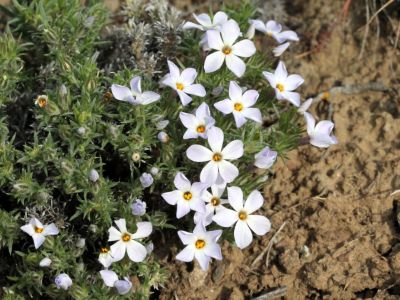What is Hood’s Phlox?
Phlox hoodii, or hood’s phlox, is a shrub that grows low to the ground in mat-like formations. This is a native wildflower in parts of western North America: southern Alaska, British Columbia, Washington, California, New Mexico, Utah, Colorado, Wyoming, Montana, and Idaho. You’ll find hood’s phlox growing naturally in rocky and sandy soils, sagebrush areas, open, dry forests, and at both high and low elevations in its native range. It also thrives in disturbed areas, such as pastures that have been grazed. It is one of the first plants to bloom in the spring in these areas. Hood’s phlox grows from a woody taproot and has short stems and sharp, small leaves. The leaves, stems, and bracts are wooly and hairy, giving the plant an overall interesting texture. The flowers are tubular with five petals and can be white, pinkish, or lavender.
How to Grow Hood’s Phlox
Consider growing hood’s phlox if you live in its native range. It thrives in dry, rocky conditions, and is a great choice for xeriscaping and native plantings. It will tolerate drought well and forms a dense mat that makes a nice groundcover with spring flowers. As long as you grow hood’s phlox in the right conditions, it will need little care. Make sure the soil drains well and the roots won’t get soggy. Water to get plants established, but then leave them alone. It should get full sun to thrive and produce flowers. You can propagate hood’s phlox by collecting seeds in the fall. Also try cuttings to propagate and speed the spread of the plant if you want it in another area or to fill in a large space.
